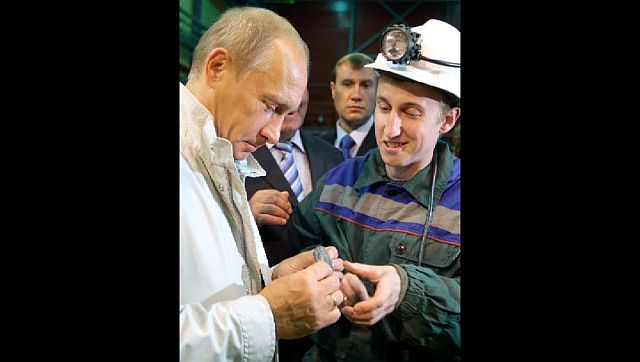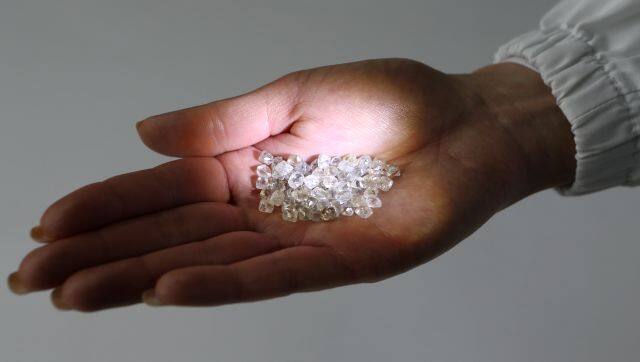They say diamonds are a girl’s best friend. But in the United Kingdom that won’t fly anymore, at least not for Russian diamonds. British prime minister Rishi Sunak will announce a ban on the import of the precious gems from Russia as countries step up sanctions against the Vladimir Putin-led country for its war in Ukraine.
The diamond ban is part of a wider package of sanctions as the prime minister and allies use the annual G7 summit in Hiroshima to redouble support for Ukraine. Sanctions will also extend to imports of Russian-origin copper, aluminium and nickel.
Rishi Sunak said the UK must show “violence and coercion do not reap rewards” ahead of the G7 summit in Hiroshima.
We take a closer look at the Russian diamond trade and whether such a ban on Russian diamonds would be effective.
From Russia with love?
Diamonds were first unearthed in the frozen tundra region of the Russian republic Yakutia in the 1950s. This discovery transformed what was the erstwhile Soviet Union into an important diamond country. Today, Russia is not only exceptionally rich in diamonds, but is also an important centre for trading, manufacturing, researching and consuming diamonds.
According to data provided by the Observatory of Economic Complexity, Russia earned a whopping $4.7 billion from diamond exports in 2021 – even as the country continued its war in Ukraine.
Another set of data from the year 2022 showed that the European Union imported around $1.5 billion worth of Russian diamonds – down from $1.9 the previous year.

One of the largest importers of Russian diamonds is Belgium and the country has been hesitant about the European Union’s plan of banning Russia’s priceless commodity. This is because it would hurt the city of Antwerp, a global hub for the precious stones, and eventually their economy. In January 2023, Belgium imported €132 million worth of Russian rough diamonds, which was higher than the €97 million in January 2022, although the weight of imports was lower in 2023.
Russian diamonds are blood diamonds?
Since Russia’s invasion began in Ukraine, Kyiv has been asking for a ban on Russia’s diamond trade, citing they are ‘blood diamonds’. For the unaware, blood diamonds, also known as conflict diamonds, are diamonds mined in a war zone and sold to finance an insurgency, an invading army’s war efforts, terrorism, or a warlord’s activity.
Almost all Russian diamonds come from Alrosa, which says it accounts for 99 per cent of all rough diamonds produced in the Russian federation. Interestingly, Alrosa has close links to the Kremlin; a third of Alrosa’s shareholding is directly owned by the Russian state.

The Guardian reports that Alrosa’s corporate leadership is also closely linked with the Kremlin, and Sergei Ivanov, its chief executive, was specifically targeted by US sanctions. Ivanov’s father is Sergei Borisovich Ivanov, reportedly one of Vladimir Putin’s closest allies and formerly a Russian minister of defence, KGB colonel general and Putin chief of staff.
Alrosa’s rough diamonds are exported throughout the world – mainly to Belgium’s Antwerp, India’s Surat and Dubai. Even though they have deleted their list of customers from their website, investigations reveal that some of their customers in the past have been Signet Jewellers, the world’s largest retailer of diamond jewellery, New York firm Leo Schachter, and iconic luxury brand Tiffany & Co.
Is the ban worldwide?
Currently, only the UK has announced a ban on Russian diamonds. The G7 countries as well as others are still to decide, as EU Council President Charles Michel said, “Russian diamonds are not forever. We will restrict trade in Russian diamonds.”
Belgium has been long been sceptical of an outright ban, saying they want a “global approach” to Russian exports, as opposed to an European Union-specific measure, to ensure the sanctions do not disproportionately hurt them.
The Belgian government has argued that such sanctions would only divert Russia’s diamond exports to other countries without actually causing Moscow economic pain. Belgian diplomats also pointed out that Russian imports were going down even without sanctions, because of public pressure and consumer awareness.
“The debate has been going on for some time because there is a clear risk that Russia could simply divert its exports to non-participating countries,” Edward Gardner, a commodities economist at Capital Economics, was quoted as telling CNBC via email.
Tom Neys of the Antwerp World Diamond Centre also said that sanctions weren’t the answer. “An international framework of complete transparency, with the same standards of compliance as Antwerp, can be that solution,” he said to Politico.

However, those calling for a ban on Russian diamonds say that even though it won’t inflict the same damage on Putin’s economy, it will send a message that the West is now pushing their national interests behind those of Ukraine’s.
Also read: How Russia-Ukraine war has taken the sheen off for many in Gujarat
Will an outright ban work though?
The answer to this question is complicated. Some experts opine that even if the G7 countries ban Russian diamonds, it wouldn’t be meaningful because the vast majority of Russian stones are exported rough.
From there, most will go to be cut and polished in India, which processes about 90 per cent of the world’s rough diamonds. Under US customs rulings, this is considered a “significant transformation” – so polished diamonds can be imported as an Indian product, not a Russian one.
Martin Rapaport, a high-profile figure in the diamond industry and founder of RapNet, the world’s largest online diamond trading network, had told The Guardian earlier, “The sanctions – unless they deepen – are not going to affect the normal business.
“The flow of diamonds from Russia to India to America will continue unabated. The sanctions are essentially very ineffective. They don’t do anything. This is not going to stop Russian diamonds.”
To make this ban on diamonds be effective, technology would have to be deployed which would be able to track the origins of the gem.
And though there is such a technology called Spacecode, it won’t be an easy task. Spacecode’s devices will not be sold for the first time until the end of this year or even the first quarter of 2024.
With inputs from agencies
Read all the Latest News, Trending News, Cricket News, Bollywood News,
India News and Entertainment News here. Follow us on Facebook, Twitter and Instagram.

0 Comments: